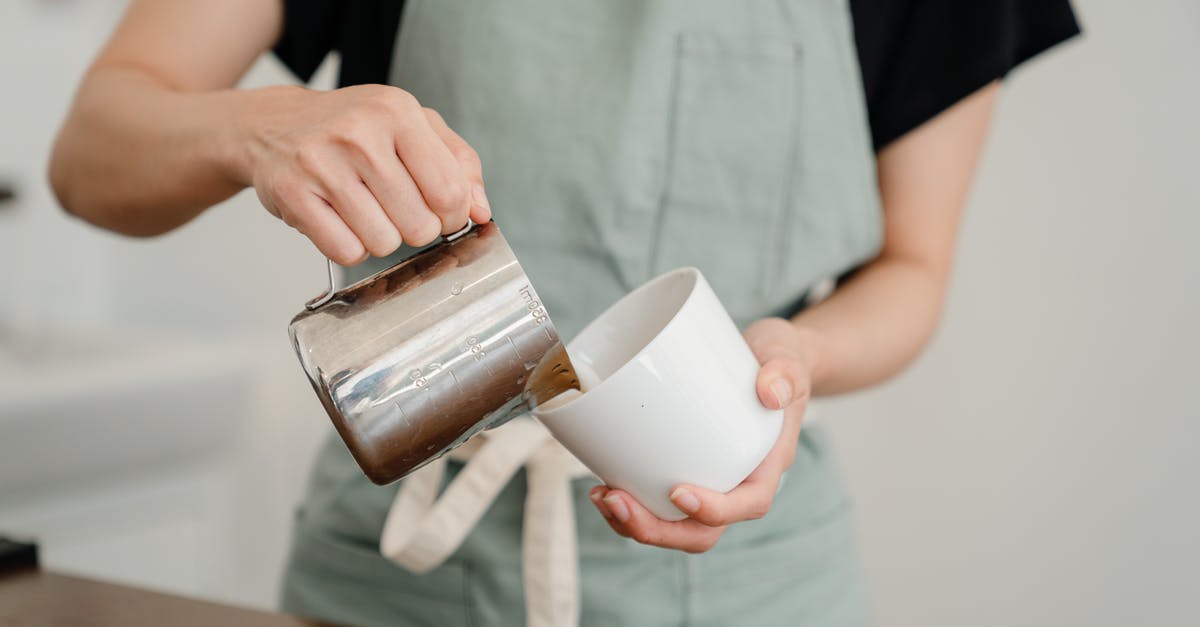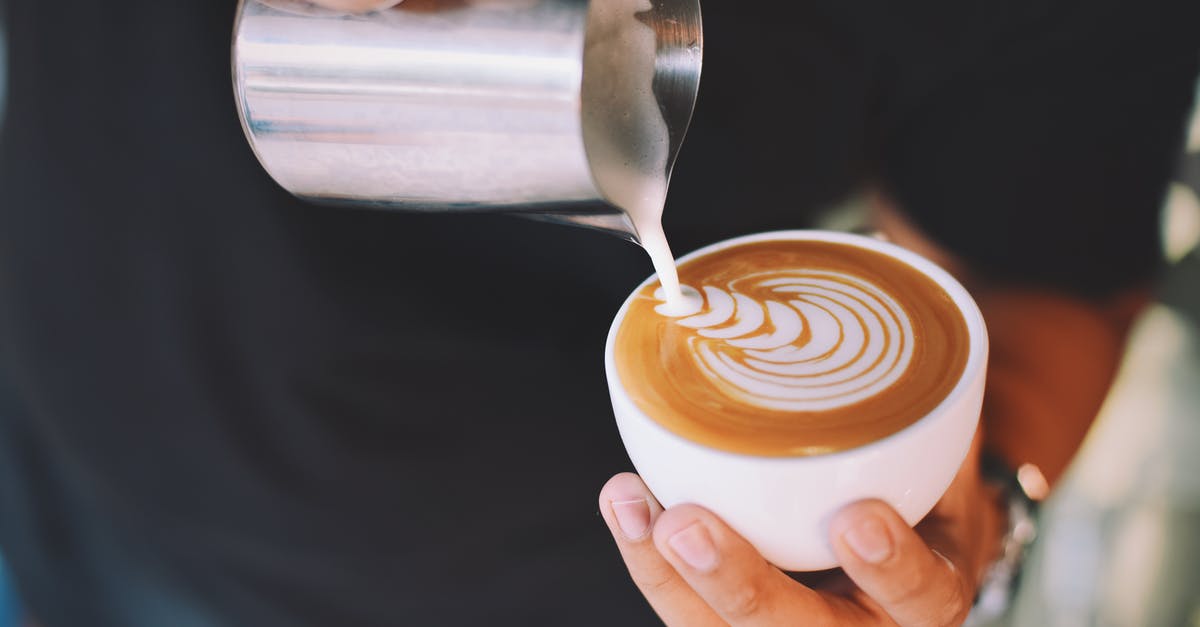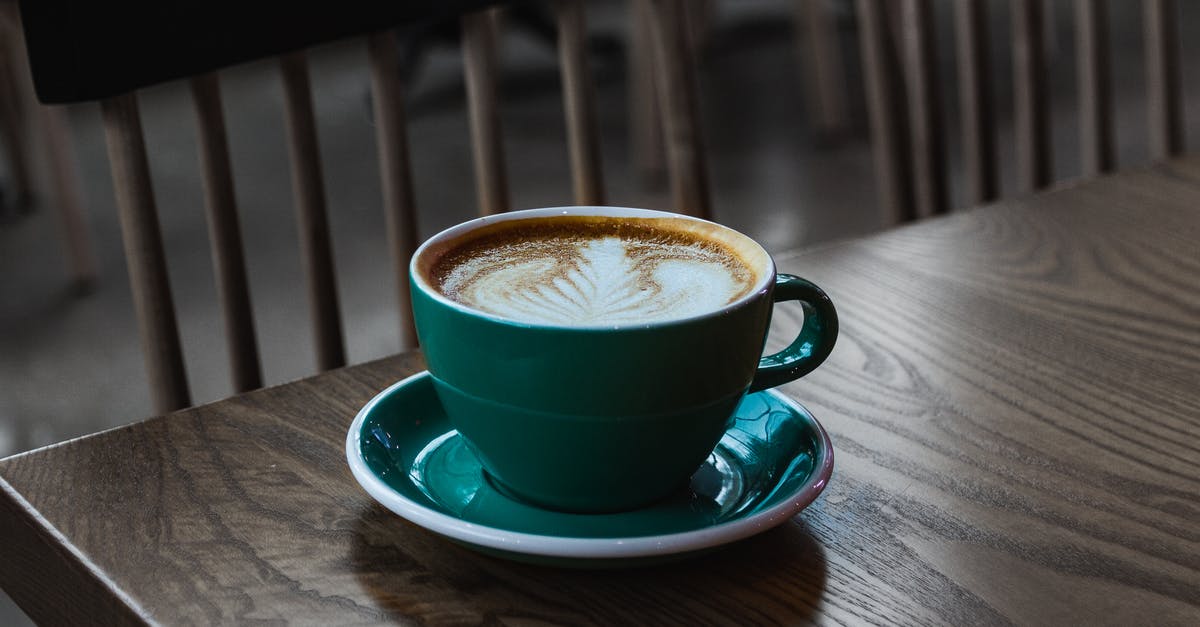How to make Latte art on a Cappuccino?

It's Sunday morning and I just missed my latte art, as usual.
I have no difficulty to make an espresso with enough crema and to get a big layer of foam from my steamed milk, but I cannot achieve to draw any pattern with it. The milk just push the crema on the side.
Is there a particular technique? or maybe I'm doing something wrong?
Best Answer
A cappuccino is probably not what you want to try latte art on. The amount of froth in a cap will probably cause the milk to be too thick to pour with.
You want to start with your milk texture. You want stretch the milk and texture it so that it is suitable for a latte or maybe even a flat white. Correct micro foam will be integrated with the milk. It won't float on top. The surface will appear shiny and it will have the consistency of cream. For a free pour this is really important.
Crema can also be your enemy. If your beans are too fresh, it can be a bit difficult to cut through. You can swirl your cup. You can also break it up a bit with your milk since you won't start pouring immediately.
Once you can get your milk texture right, a good way to start is with some basic shapes. It can be useful to have a jug with a pronounced spout.
1) A basic dot in the middle of your cup. As you get to the top of your cup, tilt your jug a bit more to let the foam push the crema out of the way.
2) Basic heart. Same as the dot. But instead of just stopping the pour, push through the dot and slow the pour down quickly at the same time.
3) Layered dot. Starts like your basic dot. But as you increase the pour rate, wiggle your jug left and right smoothly. This will pull coffee in between the layers of the milk. Then just stop pouring.
4) Layered heart. Same as the layered dot, but pull through the dot like the basic heart.
5) The Rosetta. This is probably the iconic latte art pattern. This uses the skills of your layered heart. But you start your pour from the back of the cup with relatively large wiggles, then start to pull back and make your wiggles smaller. This gives you the curls at one end of the cup and the tapering "leaves" at the other. To finish, pull through like a heart.
Other patterns are then variations on these themes. Like the tulip, swan, multiple hearts, multiple rosettas. And some combine free pouring with a bit of etching eg. smoking dog, pac man.
Edit: This is how I learned to froth milk for a standard jug. The jug should be at an angle so that you can form a whirlpool. The tip of your steam wand should be just under the surface of the milk. Then turn on the steam. So I stretch very quickly and then spend the rest of the time texturing. You shouldn't be moving your jug up or down very much if at all.
Pictures about "How to make Latte art on a Cappuccino?"



Can you do latte art in a cappuccino?
Does a cappuccino have latte art? Thoughts? It can but most are etched not poured if you are using classic cappuccino foam which is thicker than latte foam. I usually just pour the milk in for a cappa and try for a rosetta.What is the trick to latte art?
For this reason, a frequently asked question is, \u201ccan you make latte art with regular coffee,\u201d and the answer is yes. But be warned, making latte art with regular coffee will also result in a long preparation process because it eliminates the need espresso machine; therefore, you have to froth the milk separately.How to Froth and Steam Milk for Latte Art, Cappuccino and More
More answers regarding how to make Latte art on a Cappuccino?
Answer 2
I use a spoon to hold back the microfoam created from the steaming process and pour it in, and then I start pouring the foam.
Answer 3
It seems to be about the rate of pour, angle of the cup and probably a bit of luck and practice. Some shops use a cocktail stick to adjust the pattern afterwards. Have a look at this youtube video for idea.
Sources: Stack Exchange - This article follows the attribution requirements of Stack Exchange and is licensed under CC BY-SA 3.0.
Images: Ketut Subiyanto, Chevanon Photography, Chevanon Photography, Ryan Horn
